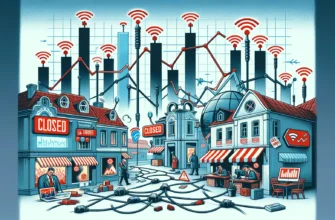Based on the latest wave of the study “Media Consumption of the Belarusian Internet Audience at Home and Abroad, October 2023”, organized by Digital Skills Coalition Belarus in partnership with the Belarusian National Platform, we will do important work in studying the changes in media and information consumption preferences of different age groups.
One of the basic questions of the media consumption study: “From which sources do you most often learn news and information you need?” (multiple choice)
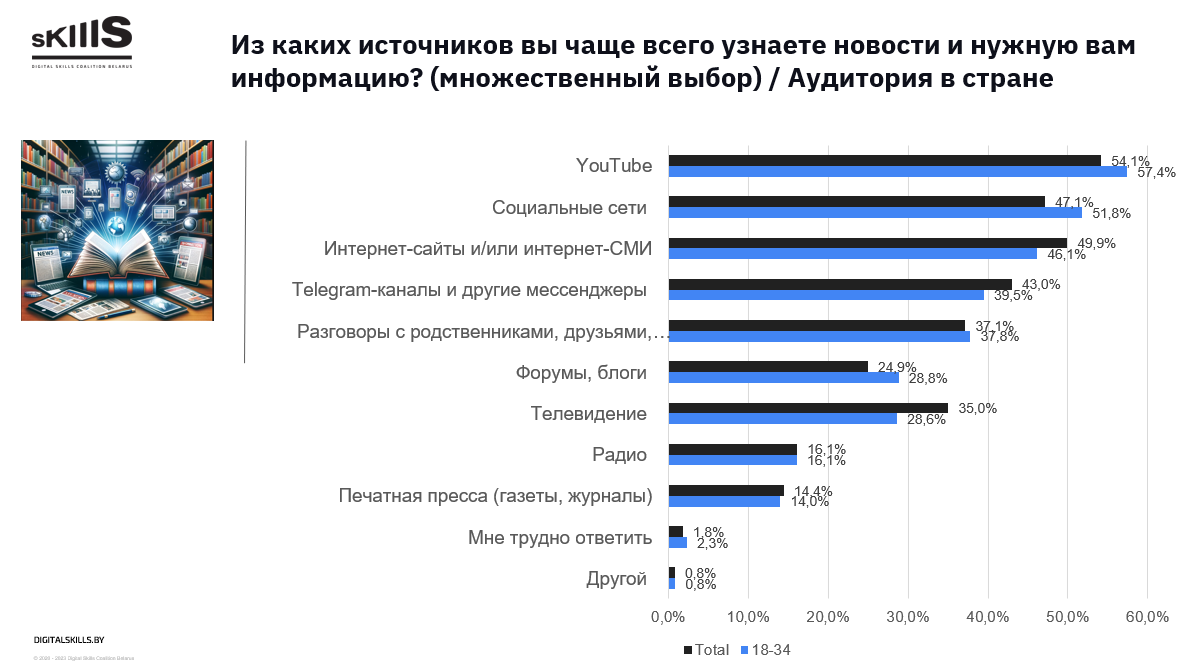
- Social Networks: Most popular among youth (51.8%), but also quite popular in general (47.1%). This indicates the significance of social media as a key source of information in modern society and a possible source of disinformation.
- YouTube: The most popular source among youth (57.4%) and also very popular in general (54.1%). Reflects the influence of video content and streaming video on modern information preferences.
- Internet Websites and/or Online Media: High percentage both among youth (46.1%) and in general (49.9%), indicating a steady interest in traditional forms of online journalism.
- Telegram Channels and Other Messengers: Popular in the general category (43.0%) compared to youth (39.5%). This may indicate an expansion in the use of messengers for information gathering across all age groups and a possible decline among the younger audience.
- Conversations with Relatives, Friends, Acquaintances: A sufficiently high percentage in both groups, emphasizing the importance of personal contacts and oral communication in the dissemination of information, meaning “word of mouth” is important for spreading news agenda. Also, it can be highly susceptible to the spread of misinformation and disinformation.
- Television: Significantly more popular in general (35.0%) compared to youth (28.6%). This may reflect a shift in media consumption preferences among the youth.
- Forums, Blogs: Greater popularity among youth (28.8%) compared to the overall percentage (24.9%), which may indicate young people’s interest in more niche and specialized platforms for exchanging opinions and information.
- Radio: Consistently popular in both categories (16.1%).
- Print Press (Newspapers, Magazines): It is evident that it is still in demand, although to a lesser extent compared to digital channels (14.0% among youth and 14.4% in general).
Respondents – Belarusian internet audience in the country aged 18+.
Next, using social media monitoring platforms, we will collect accounts, channels with more than 50% subscribers from Belarus and more than 30%, aged 18-34.
YouTube
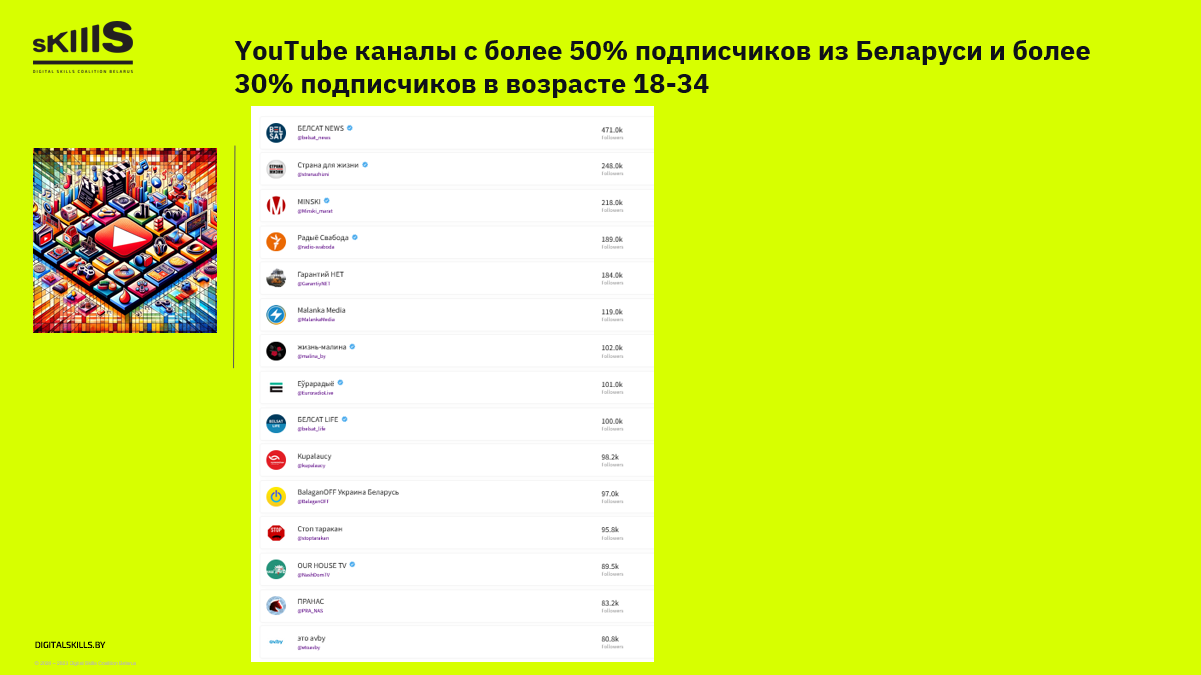
As known from past media consumption studies and published YouTube monitoring results, Belarusian YT channels predominantly have male subscribers. This is reflected in the fact that almost only news channels are presented here.
TikTok
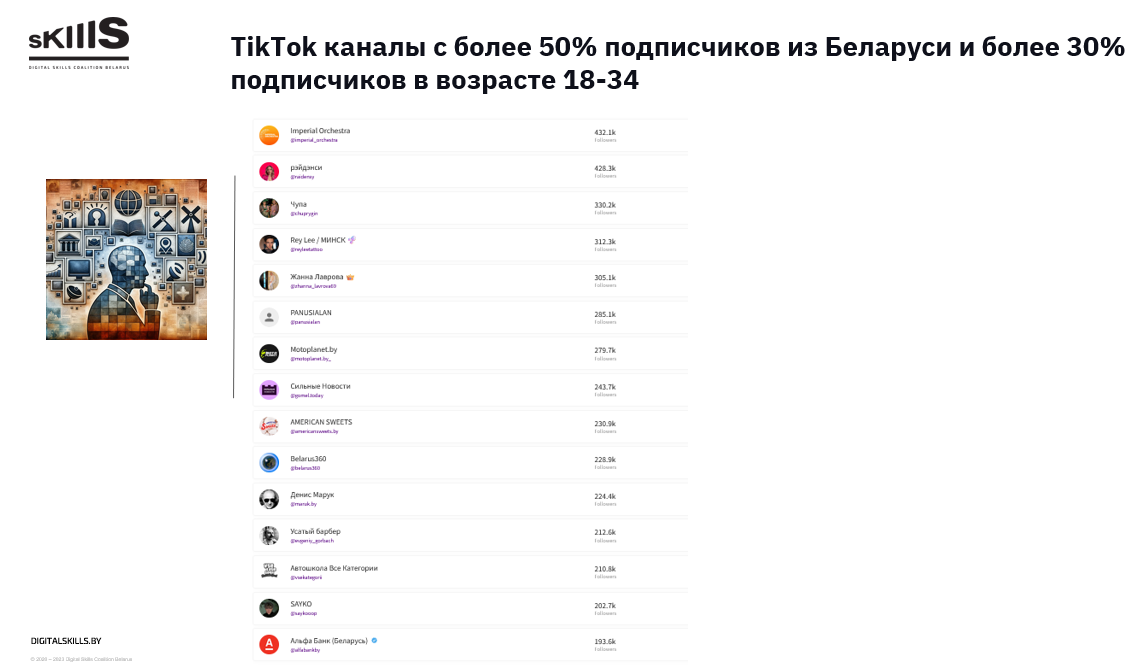
According to this year’s media consumption study, TikTok has become the number one social network, as a source of news and other information, among the Belarusian audience in the country. This is among the male audience, while the female audience maintained Instagram in the first position.
Instagram
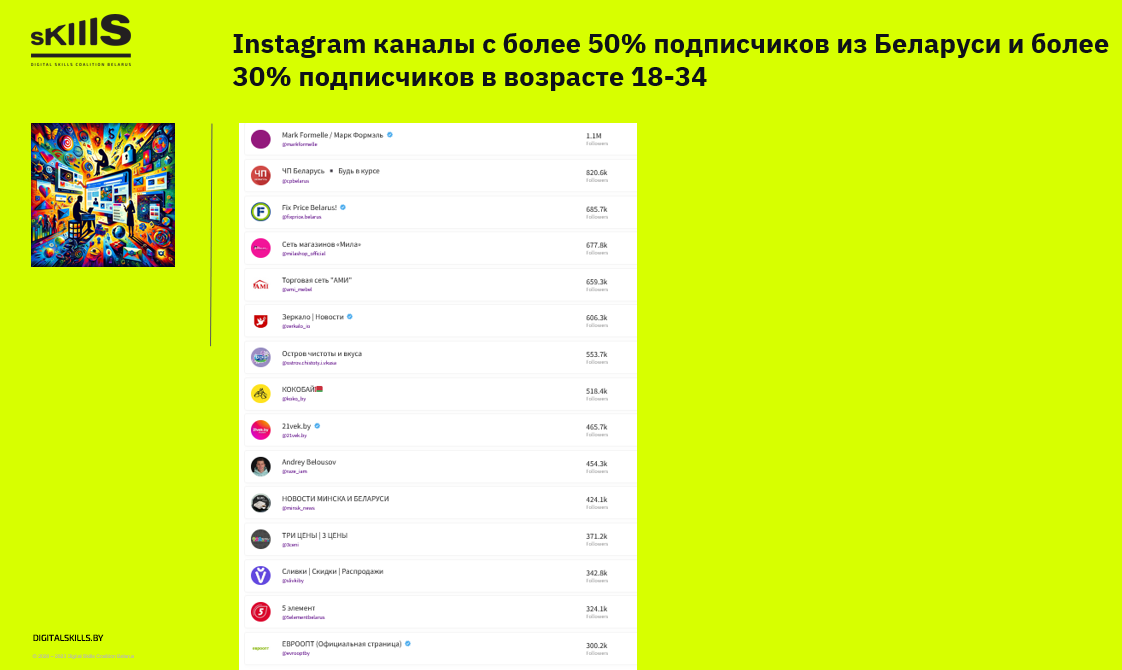
Here, strong positions of various Belarusian retail networks, reviews, and comparisons are evident.
Conclusions:
- Digital Platforms Dominate: Among the youth in Belarus, there is a high level of use of digital platforms such as YouTube, TikTok, and Instagram.
- Traditional Media: Traditional sources of information, such as television and print media, are still popular but their influence is declining among the youth.
- Social Networks and Messengers: Represent a significant part of media consumption, especially among young people.
- Demographic Differences: A significant difference in preferences between age groups is evident, highlighting the importance of a targeted approach in media and marketing.
These data provide valuable insights into media preferences in Belarus, which can be useful for marketers, media planners, and researchers.
Publication prepared by Baltic Internet Policy Initiative


